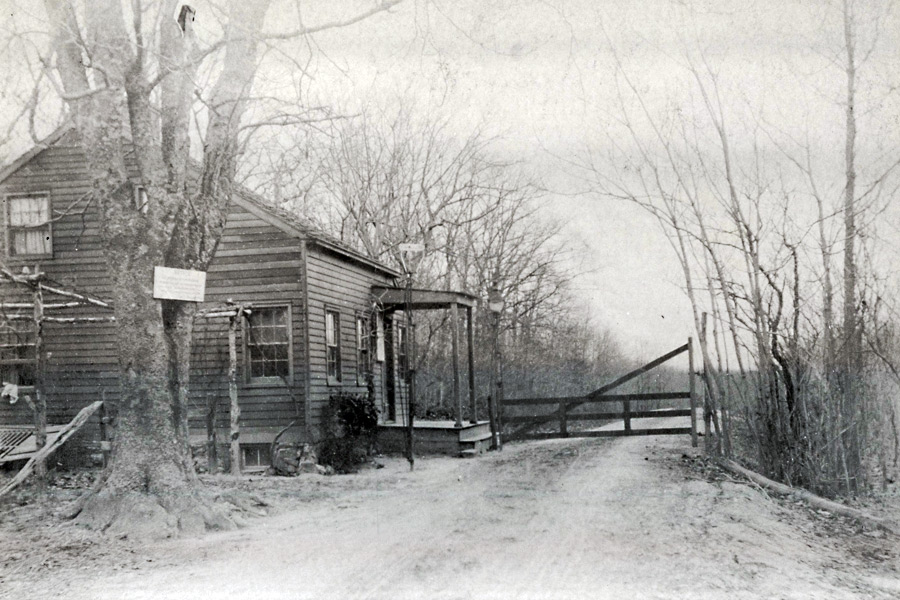Our Amazing History: The Turnpike

The Bridgehampton-Sag Harbor Turnpike has a history that is more interesting than any other road in the Hamptons.
It was built in 1834 and opened in 1837 as a toll road — not a toll road built by the county or state, but a toll road built by three wealthy Hamptons men, one a prominent Bridgehampton lawyer and the other two, men who’d made their fortunes in the Sag Harbor whaling industry.
At the time, the only way to bring goods or people from Montauk Highway to the new bustling port-of-entry town of Sag Harbor was by a twisty 8-foot-wide track indicated on maps as “Cart Path from Bull’s Head to Great Meadows.” The partners cut a straight dirt road 16 feet wide and named it “the Sag Harbor and Bull’s Head Turnpike.” The tolls, paid at a toll booth with a wooden gate at Bridgehampton, covered the cost of the toll taker and maintenance. There were also profits.
These were the tolls. Wagons and carts pulled by two horses, mules or oxen: 8 cents. Coaches and pleasure carriages: 12 cents. Horse and riders: 3 cents. Horse being drove: 1 cent each. Sled or sleigh pulled by one horse: 4 cents. Score of hogs or sheep: 4 cents.
The three men also sold stock in this company to the general public. For a single share at $20, you received a part of the action.
Before, during and after the Civil War (1861–1865) runaway slaves from the South were likely transported along the turnpike to be hidden in the Eastville section of Sag Harbor. Thus the route was a part of the Underground Railroad. Eastville today is a historic site. It is unlikely the freed slaves were charged the fee.
In 1870, a few years after the Civil War ended, a real railroad, the Long Island Railroad Company, extended its tracks out to Bridgehampton and then on to Sag Harbor. The railbed and tracks ran roughly parallel to the toll road along the way. Toll road revenues suffered accordingly.
In 1891, a brick factory was built on the turnpike midway between Bridgehampton and Sag Harbor. It went out of business in 1902, though some ruins remain. That same year, the toll road company, losing money, stopped collecting tolls. Three years later, it ceased business. Four years after that, the toll house burned to the ground.
With the whaling industry over, Sag Harbor had spiraled down into a decline. And as automobiles came into general use, the railroad ceased running trains to Sag Harbor.
In 1940, with World War II looming, the government tore up the steel tracks to Sag Harbor for use in making guns, planes and tanks for the war effort. But the railbed remains.
Over the centuries, the potato farmers in the Hamptons always needed temporary workers to pick the crop in the fall. After World War II, many labor camp crew chiefs drove buses south and recruited mostly African Americans to help with that activity. Some lived in labor camps and shacks on the farm property.
In 1949, on a day when the farmers needed everyone to pick the crop, thus leaving the children to take care of one another in the shacks in Bridgehampton, a fire broke out and two of the children died. As a result, Bridgehampton residents raised money and bought a 6-acre farm on the turnpike and transformed it into a not-for-profit child care center where migrant children could be cared for when all hands were needed in the field.
A $3.5 million classroom, assembly hall and administration building will open soon at the Bridgehampton Child Care and Recreation Center, still there on the turnpike. And that’s the story.



